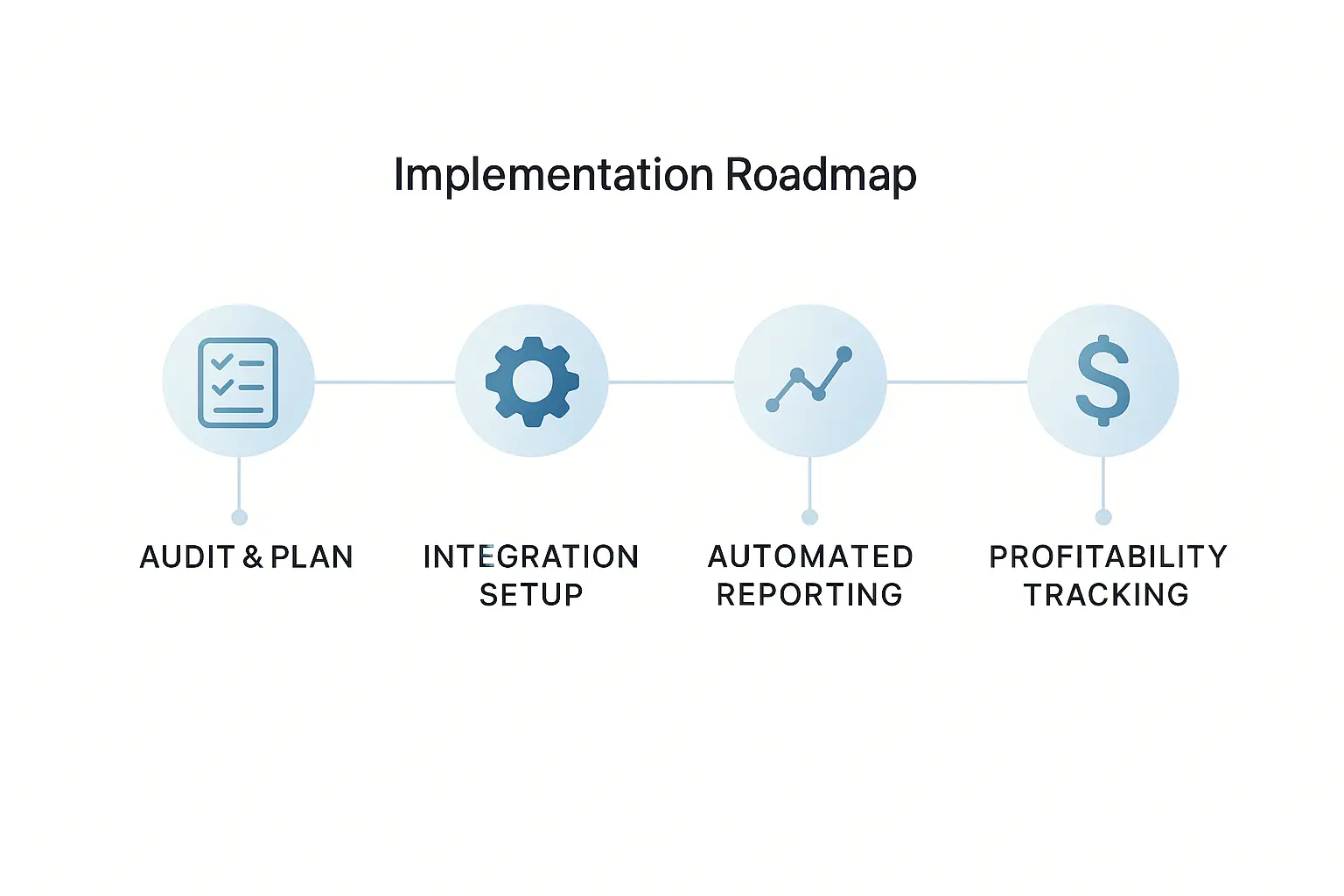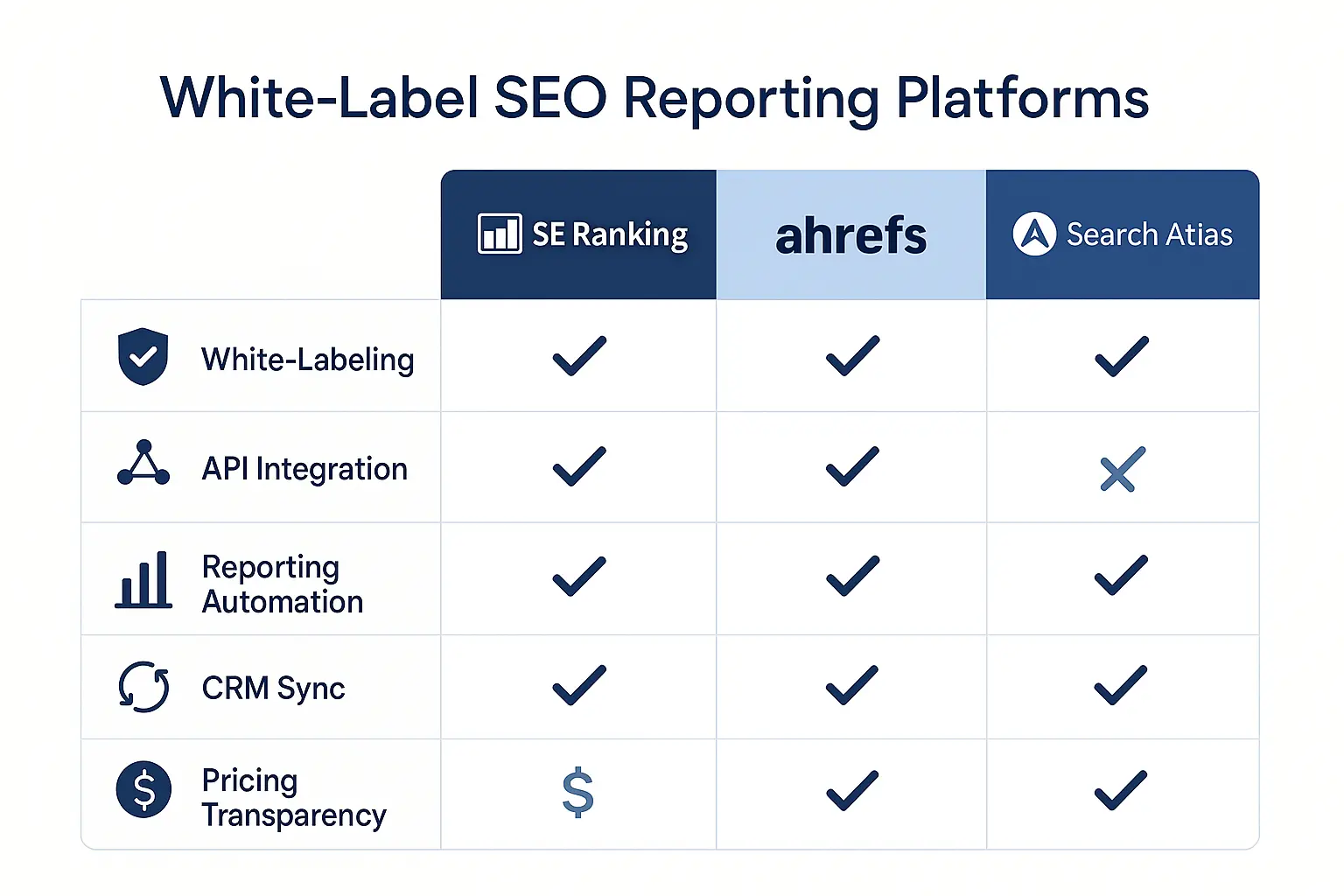Your agency is growing and you’re closing more SEO deals, but the celebration is short-lived. Soon, you’re drowning in a sea of spreadsheets, Slack messages, and disconnected software. Client updates are slipping through the cracks, your team is buried in manual reporting, and profit margins are shrinking under the weight of operational chaos.
This is the scalability trap. The first instinct is to buy another tool, but that only adds another login and another silo of data.
The problem isn’t a shortage of tools, but a lack of a cohesive system. As the global SEO market races toward a projected $122.11 billion by 2028, the agencies that thrive will be those that build a scalable delivery machine—not just a collection of software subscriptions. This guide provides the blueprint for that machine, focusing on the one area most agencies overlook: integrating your core operational stack with a white-label SEO partner.
Chapter 1: The Modern Agency Tech Stack: A Systems-First Approach
For years, the conversation around agency tools has focused on features: “Which platform has the best rank tracker?” or “Who offers the slickest white-label reports?” While important, these questions miss the bigger picture.
A systems-first approach shifts the focus from individual tools to the workflow connecting them, prompting better questions:
- How does a “won deal” in our CRM automatically create a project in our management hub?
- How do technical audit findings from our SEO platform create trackable tasks for our delivery partner?
- How does a completed task automatically update a client-facing progress report?
This isn’t about finding a single piece of software that does everything. It’s about choosing best-in-class tools for each job and ensuring they communicate seamlessly. This philosophy is the foundation for an agency that can scale profitably without bloating headcount or sacrificing quality.
Chapter 2: The Core Components of a Scalable SEO Delivery Stack
A truly scalable system rests on four integrated pillars. Let’s break down each one—and more importantly, explore how to connect it to your delivery partner.
The Project Management Hub: Your Agency’s Central Command
This is your operational command center. Tools like Asana, ClickUp, and Monday.com are the chassis of your delivery vehicle, providing structure, accountability, and a single source of truth for your internal team. Choosing the right one is less about features and more about its ability to connect with other systems.

But here’s the critical piece most guides miss: keeping your internal command center perfectly in sync with an external delivery team. Relying on email and status meetings creates friction and risk. The goal is seamless integration.
Evaluate core project management platforms on their integration strengths and workflow efficiency to build a scalable SEO delivery system.
Best Practices for PM & Partner Integration:
- Shared Workspaces: Grant your partner guest access to specific client projects. This transparency ensures everyone is working from the same task list and deadlines.
- Standardized Handoffs: Use task templates and automations. When your team completes a “Client Onboarding” task, it should automatically create and assign a “Technical Audit” task to your partner with all necessary information pre-filled.
- Overcome API Limitations: Research shows that significant technical challenges exist around data syncing between major PM platforms. A true partner will have pre-built workflows to overcome these limitations, using tools like Zapier or their own internal processes to ensure data integrity.
The SEO & Reporting Platform: The Engine
This platform is your data engine. Tools like SE Ranking, Ahrefs, or Semrush provide the raw materials for your SEO strategy: keyword data, backlink analysis, and site audit results. In a systems-first model, this platform isn’t the primary workspace. Instead, it’s the engine that feeds actionable data into your project management hub.

Compare top white-label SEO engines on critical features that enable seamless integration and scalable reporting for your agency’s clients.
The key is selecting a platform—and a partner—that prioritizes data accessibility. The goal is to pipe key metrics (rank improvements, traffic growth, technical health scores) directly into your PM hub and client dashboards. This commitment to AI-powered SEO automation eliminates hours of manual report building and ensures your team and clients are always looking at the latest data.
Client Communication & Portal: The Branded Experience
How you present results is just as important as the results themselves. A dedicated client portal or automated reporting tool (like DashThis or Google Data Studio) provides a professional, branded home for all communication, deliverables, and performance metrics.
In an integrated system, this portal becomes the final destination for your automated data flow.
- The SEO Engine gathers ranking and traffic data.
- This data is synced to the PM Hub, where your account manager can add context and strategic commentary.
- The combined data and insights are then automatically pushed to the Client Portal, triggering a notification to the client that their latest report is ready.
This workflow transforms reporting from a time-consuming monthly chore into a seamless, value-added service that runs on autopilot.
CRM & Billing Integration: Protecting Your Margins
The system shouldn’t just manage signed clients; it should engage from the moment someone becomes a lead. Integrating your CRM (like HubSpot or Salesforce) and billing platform (like QuickBooks or Stripe) closes the loop.
- Proposal to Project: A deal marked “Closed-Won” in your CRM should automatically generate the client project in Asana, complete with the right template and team assignments.
- Milestones to Invoices: The completion of a major project phase in your PM tool can trigger an invoice to be sent from your billing platform.
This level of integration gives you a real-time view of profitability for every client, ensuring that your scalable delivery system is also a profitable one.

Chapter 3: Choosing a True Systems Partner, Not Just a Vendor
Any freelancer or outsourcing firm can execute a list of tasks. But a true white-label SEO partner functions as an extension of your own systems, designed to integrate with your tech stack from day one. They don’t just take orders; they help you build a more efficient machine.
When evaluating potential partners, move beyond a simple features comparison and ask the questions that reveal their operational maturity.
Trust a systems partner that delivers seamless integration across your entire SEO delivery tech stack, ensuring operational efficiency and profitability.
The Systems Partner Checklist:
- Onboarding: “How do you integrate with our existing tech stack (Asana, ClickUp, etc.)?”
- Workflow: “Can you demonstrate how a task flows from your team to ours within a shared project management environment?”
- Reporting: “How do you deliver reporting data? Is it a static PDF, or can it feed directly into our client dashboards via an API or data connector?”
- Flexibility: “How do you adapt your processes if we use a tool you’re not familiar with?”
- Communication: “What is your protocol for handling urgent issues? Does it live inside our shared PM tool or elsewhere?”
A vendor will sell you a service. A partner will help you scale a system.
Systems Partner Integration Example

Chapter 4: Conclusion – From Disconnected Tools to a Scalable Delivery Machine
Building a modern tech stack isn’t about buying the most expensive software; it’s about making deliberate choices that prioritize seamless integration and automation. By shifting to a systems-first mindset, you transform a collection of disconnected tools into a powerful, efficient, and profitable engine for SEO delivery.
This approach lets you focus on what you do best—strategy and client relationships—while your systems and partners handle the execution. You escape the scalability trap and build an agency that’s ready for the future, capable of delivering sophisticated omnichannel growth SEO without the operational drag.
Follow a clear, achievable path to transform your agency’s SEO delivery system into a scalable, profitable operation.
Ready to build a delivery system that scales with you? Discover how JVGLABS becomes the invisible systems partner powering your brand’s success.
Frequently Asked Questions
- Do I need to switch my project management tool to work with a partner like JVGLABS?
Absolutely not. A flexible systems partner should adapt to your core tools. The key is establishing clear integration points and workflows within the platform you already use, whether it’s Asana, ClickUp, Monday.com, or another system. - Won’t adding a partner and integrating tools hurt my profit margins?
It’s actually the opposite. A well-integrated system protects your margins. By automating manual tasks like report building and data entry, you eliminate hidden operational costs. Partnering allows you to scale delivery capacity without the fixed overhead of hiring, ensuring profitability scales directly with revenue. - What’s the real difference between a white-label tool and a white-label partner?
A white-label tool provides data and a re-brandable interface, but you are still responsible for the strategy, execution, and manual work of connecting it to your other systems. In contrast, a white-label partner provides a complete delivery system: the strategy, the execution, and the operational expertise to integrate seamlessly into your agency, all under your brand. One is a utility; the other is a growth engine.

